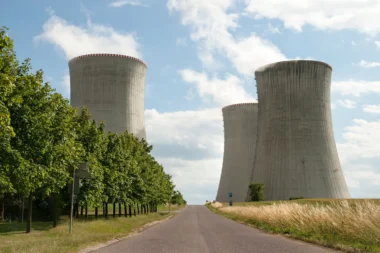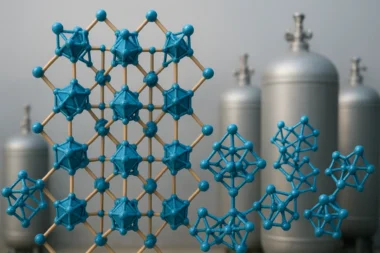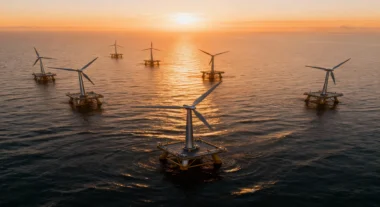Introduction
Growing waste management challenges
In today’s world, waste generation is rising, posing a significant challenge for waste management systems. The increasing population, urbanization, and consumption patterns contribute to the mounting waste volumes. However, traditional waste disposal methods, such as landfilling, are becoming unsustainable due to limited landfill space and environmental concerns.
Waste-to-Energy as a Sustainable Solution
To address the growing waste management challenge, waste-to-energy technology has emerged as a promising and sustainable solution. Waste-to-energy encompasses various technologies that convert waste materials into valuable products, such as electricity, heat, or biofuels. This approach reduces the amount of waste sent to landfills and provides a renewable energy source.
Waste-to-Energy Technologies
Definition and Objectives
To fully understand waste-to-energy, it is essential to grasp the concept and objectives behind this technology. Waste-to-energy aims to minimize waste volumes, harness the energy potential of waste, and contribute to a circular economy by promoting resource recovery.
Incineration
Incineration is one of the most widely used waste-to-energy technologies. This process involves the controlled combustion of waste materials at high temperatures. A step-by-step guide will explore the incineration process, including energy recovery methods and the environmental considerations associated with this technology.
Anaerobic Digestion
Another prominent waste-to-energy process is anaerobic digestion. This biological process breaks down organic waste without oxygen, producing biogas as a valuable byproduct. We will delve into the intricacies of anaerobic digestion, explaining the biogas production process and its utilization for electricity generation and heat production.
Gasification
Gasification technology holds great potential for waste-to-energy conversion. This process involves converting carbonaceous waste materials into syngas, which can be used for various applications. Our step-by-step guide will walk you through the gasification process, from feedstock preparation to syngas production and its potential use in electricity generation and biofuel synthesis.
Pyrolysis
Pyrolysis is another thermal conversion process used in waste-to-energy applications. Solid waste materials are subjected to high temperatures without oxygen through pyrolysis, producing pyrolysis oil, gas, and char. We will explore the detailed process of pyrolysis and discuss the potential uses of pyrolysis oil and the gasification of solid residues.
Benefits and environmental considerations
Advantages of Waste-to-Energy Technology
Waste-to-energy technology offers numerous advantages. It helps reduce waste volume, alleviating the burden on landfills and prolonging their lifespan. Additionally, waste-to-energy facilities generate renewable energy, contributing to the diversification of the energy mix. Furthermore, these systems promote resource recovery and support the transition to a circular economy.
Environmental Concerns and Mitigation Measures
While waste-to-energy technology offers significant benefits, addressing the environmental concerns associated with its implementation is crucial. This section will explore air emissions and pollution control, waste segregation and treatment for optimized energy recovery, and measures to mitigate potential environmental impacts.
Case Studies: Successful Waste-to-Energy Implementations
Case Study A: Large-scale Incineration Plant with Combined Heat and Power (CHP)
We will examine a successful case study of a large-scale incineration plant that effectively generates electricity and district heating through combined heat and power (CHP) systems. This case study highlights such a waste-to-energy facility’s technical aspects, operational considerations, and benefits.
Case Study B: Anaerobic Digestion Facility for Organic Waste Treatment
Through a detailed examination of a biogas plant, we will explore the successful implementation of anaerobic digestion technology to treat organic waste. This case study will shed light on anaerobic digestion’s operational processes, energy generation potential, and environmental benefits.
Case Study C: Gasification Plant for Biomass and Municipal Solid Waste
This case study will delve into a gasification facility that converts diverse feedstocks, including biomass and municipal solid waste, into syngas and biofuels. This study will provide insights into the gasification process, its applications, and the advantages of this waste-to-energy approach.
Step-by-Step Guide: Waste-to-Energy Conversion
Waste preparation and handling
Efficient waste preparation and handling are crucial for the success of waste-to-energy conversion. This section will emphasize the importance of waste segregation and pre-processing and guide the efficient handling and storage of waste feedstock.
Conversion Process
To understand waste-to-energy conversion, we will provide a detailed explanation of the chosen technology’s conversion process. This will involve exploring the equipment and machinery involved in the conversion process and ensuring a comprehensive understanding of the operations.
Energy Generation and Recovery
After the waste is converted, the generated heat and electricity play a crucial role in the overall process. We will delve into utilizing heat and electricity derived from waste conversion, discussing various power generation methods and potential applications for the energy produced.
Residue management and disposal
Proper management of solid residues and byproducts is essential for sustainable waste-to-energy systems. This section will discuss residue management and disposal considerations, including secondary applications or responsible disposal methods.
Future Outlook and Conclusion
Advancements in Waste-to-Energy Technology
The future of waste-to-energy holds exciting possibilities. We will explore emerging technologies and research areas that aim to enhance waste-to-energy systems’ efficiency, resource recovery, and environmental performance. This includes advancements in process optimization, improved environmental controls, and the integrating of innovative technologies.
The role of waste-to-energy in a circular economy
Waste-to-energy plays a vital role in fostering a circular economy. We will discuss how waste-to-energy technologies contribute to a sustainable waste management framework by promoting material and energy recovery, reducing waste generation, and supporting the principles of a circular economy.
Conclusion
By harnessing the potential of waste materials, waste-to-energy systems offer a sustainable solution to the waste management challenge while simultaneously generating renewable energy. We will emphasize the importance of waste-to-energy in achieving sustainable development goals and the need for continued research and innovation in this field.



